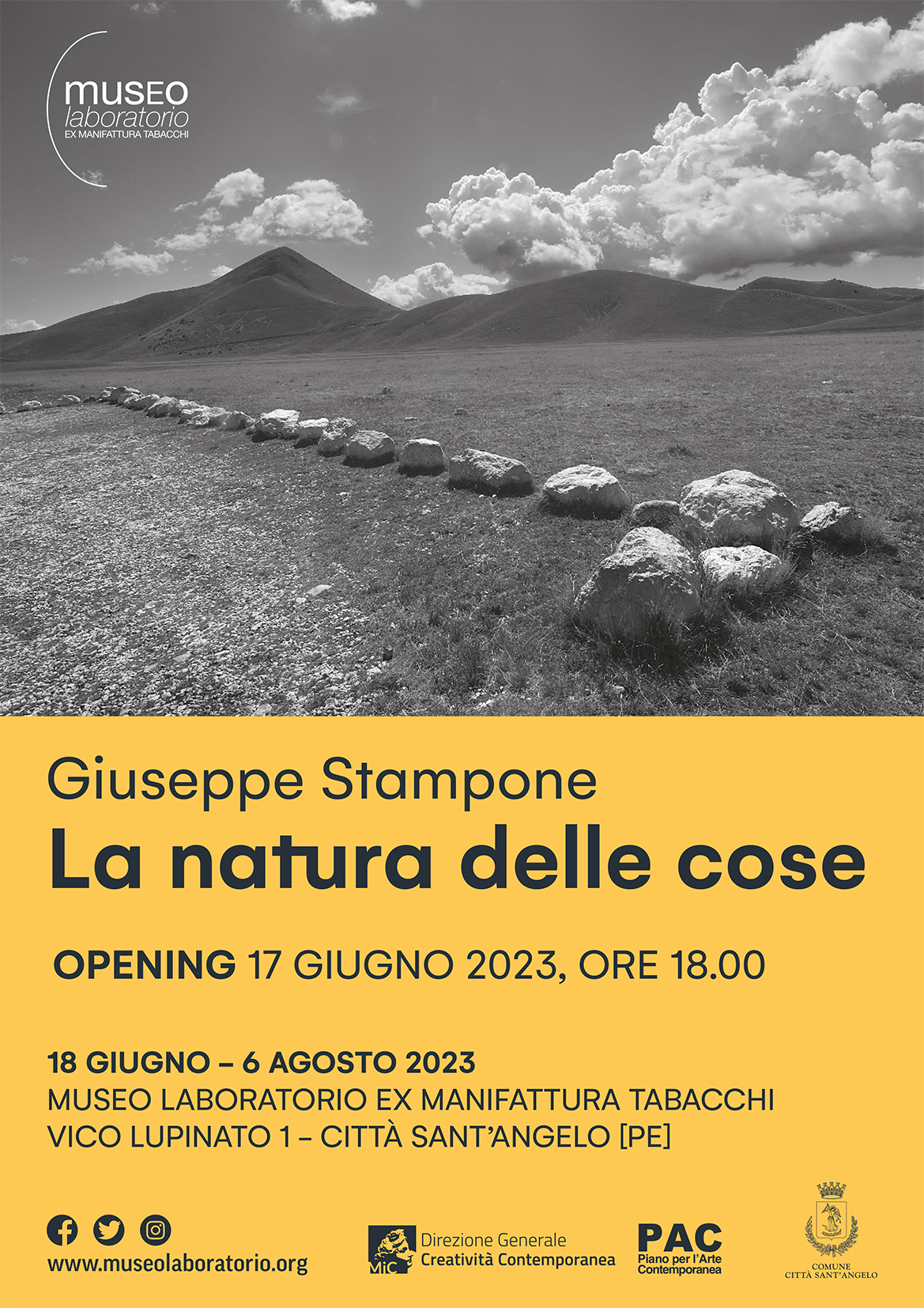
from 18 June to 6 August 2023 – extended to 31 August 2023
Museolaboratorio ex manifattura tabacchi
Opening: Saturday 17 June, 6 p.m.
Closing: Monday 4 September 2023, 6:30 p.m.
artist
Giuseppe Stampone
exhibition curator
Enzo De Leonibus
From 17 June to 6 August 2013, the Museolaboratorio – Ex manifattura Tabacchi in Città Sant’Angelo (PE) is presenting La natura delle cose (On the Nature of Things) project by the artist Giuseppe Stampone, winner of the “PAC2021 – Piano per l’Arte Contemporanea” promoted by the Ministry of Culture’s Office for Contemporary Creativity. It will be opened to the public at 6 p.m. on Saturday 17 June, becoming an official part of the museum collections.
The title refers to the philosophical poem in six books by Lucretius, written in 50 BC, in which the Latin poet outlines the molecular constitution of the universe, the soul and its fate, the fear of death and the individual characteristics of the human being (body, senses, thinking and love). The last two books are dedicated to the creation of the world, including natural phenomena such as weather systems and the development of civilization. In this work, Lucretius is seeking to place humanity in a broader and more universal context, exploring the place humankind occupies in the natural world, on both a molecular and astrological level.
Stampone set forth from this starting point to develop La natura delle cose project: around sixty works – including photographs, drawings and a video installation – designed to stimulate a reflection on the landscape and the “place” that humans occupy with respect to the planet they inhabit.
The artist has returned frequently to two places that are very dear to him: the Gran Sasso and the Maiella, in Abruzzo, elevating them to a paradigm of this idea. During his long walks, Stampone has personally taken a series of photographs of the mountains, which he then uses to create graphite drawings. The intention of the process was to create an archive of images for future generations, who, due to humans’ lack of care for the planet, risk seeing the habitat in which they live changed forever. It is now scientifically prove that soil erosion, pollution and the uncontrolled exploitation of natural resources is producing tragic and almost irreversible effects on extremely fragile ecosystems.
Departing from the main modus operandi of his works of recent years (the artist has often taken images from the internet to create his works), in this new project Stampone has chosen to use a camera himself with the intention of rediscovering the sentimental significance of the subjects portrayed, his identity and his origins. After drawing the photographed mountains, the artist uploaded the original images into Photoshop to obtain the numerical references of the Pantone colours in the snapshots, thus comparing the graphite of the drawings (natural) with the chemical colours used to make the prints; as industrial colours, created to imitate nature, the shades were then juxtaposed with the images of nature to blur the boundaries between natural and artificial elements.
The entire process has been documented in the video featured in the exhibition, which illustrates the project stage by stage: from the artist’s high-altitude excursions, to the taking of the photographs, the production of the drawings and the selection of the Pantone colours. The video, entitled Gran Sassa, was made in collaboration with the artist Maria Crispal, the artist’s partner in life and work.
This interest in industrial processes can be linked to the man/artist’s desire to imitate nature, but also as an attempt to master it that does away with our sense of precariousness and limits. Graphite, on the other hand, is a material that implies a precise – not deceptive – relationship with time, and is a deliberate choice made by the author. Drawing is a process that nourishes reflection and helps to reformulate our relationship with time. Working with a pencil does not allow the process of doing a drawing to be accelerated, and so using graphite is Stampone’s way of opposing the accelerated pace of life today.
The Gran Sasso and the Maiella, “Stampone’s mountains”, are both autobiographical and universal. They are images that the artist carries inside himself, linked to his identity and memories, but also mythical icons, figures that inspire subjection and monumentality. In this work, the mountains have given substance to the reflections of the artist, who has returned to his childhood places in an attempt to find a deeper connection with things. As observers, the work is an opportunity for us to rethink our role in the world through art, ethics and a sense of responsibility towards our host environment and other living beings.
Biography
Giuseppe Stampone was born in Cluses, France, in 1974 and lives and works in Teramo, Brussels and Rome. His production ranges from multimedia installations and videos to ballpoint pen drawings, a technique common to many of his projects. He came up with the idea behind Solstizio Project (www.solstizio.org), produced in partnership with the European Union and developed in various countries. Since 2002 he has been working with the artist and his life partner Maria Crispal, with whom he shares the Global Education project and Solstizio Project.
Stampone teaches at the Accademia di Belle Arti in Bologna and collaborates with universities and academies such as IULM in Milan, Federico II in Naples and the McLuhan Program in Culture and Technology in Toronto. He is involved with art and new media research and experimentation with Alberto Abruzzese and Derrick De Kerckhove. He is an associate member of the American Academy in Rome and the Civitella Ranieri Foundation in New York. In 2020 he was the first Italian winner of the residency at Villa Romana in Florence, funded by Deutsche Bank. In 2013, with L’ABC del Bel Paese, he won the first “Pacco d’Artista” prize promoted by Poste Italiane. His works have been exhibited at: 59th International Art Exhibition – Venice Biennale, Cuba Pavilion (2022); London Design Biennale (2021); 17th Venice Architecture Biennale, South Korea Pavilion (20219; Villa Romana, Florence (2021); Museo CIAC, Foligno (2018); Seoul Architecture Biennale (2017); Ostend Triennale (2017); Massachusetts Institute of Technology Museum, Boston (2016); 56the Venice International Art Biennale (2015); Fondazione Palazzo Albizzini Collezione Burri, Ex Seccatoi del Tabacco e Palazzo Vitelli a Sant’Egidio, Città di Castello (PG) as part of the ‘Au rendez-vous des Amis’ exhibition (2015); GAMeC – Galleria D’Arte Moderna e Contemporanea, Bergamo (2014); Calcografia Nazionale – Istituto Centrale per la Grafica, Rome (2014); Palazzo Reale, Milan (2014); Museo Archeologico, Ascoli (2013); Liverpool Biennial (2010); Kochi-Muziris Biennale, Kerala, India (2012); 11th Havana Biennial (2012); 14th and 15th Art Quadriennale, Rome (2004-2008); Gwangju Museum of Art, South Korea; Wilfredo Lam Contemporary Center, Havana; MAXXI – Museo Nazionale delle arti del XXI secolo, Rome; MACRO, Rome; Fondazione Sandretto Re Rebaudengo, Turin. His solo exhibitions in public spaces have included: ‘Personale connettivo’, MAC, Lissone (2022); ‘Nel blu dipinto’ at the Sassuolo-based company Marca Corona, with text by Leonardo Caffo (2022); ‘Due generazioni a confronto: Giuseppe Stampone e Ugo La Pietra’, Museo CIAC, Foligno (2018); ‘Odio gli indifferenti’, Calcografia Nazionale, Rome (2014); ‘Giuseppe Stampone l’ABC dell’arte nei confini sociali del gioco’, Palazzo Reale, Milan (2014); ‘Bic Data Blue’, GAMeC, Bergamo (2014); ‘Private Collections’, L’Arca – Laboratorio per le arti contemporanee, Teramo (2012); ‘Archeologia contemporanea. Giuseppe Stampone e Eugenio Tibaldi’, Museo Archeologico, Ascoli Piceno (2013); ‘A Flavio/Giuseppe Stampone e Manfredi Beninati’, Museolaboratorio, Città Sant’Angelo (2007); ‘Giuseppe Stampone: tecnologia del sé’, Pinacoteca Civica, Teramo (2006). His works feature in the following collections: Museo Mfah Museum of Fine Arts Houston; MAXXI, Rome; GAMeC, Bergamo; Calcografia Nazionale – Istituto Centrale per la Grafica, Rome; Biennale of Sydney; Kochi Biennale Foundation; Wilfredo Lam Center, Havana; Artnexus Foundation, Bogotá.
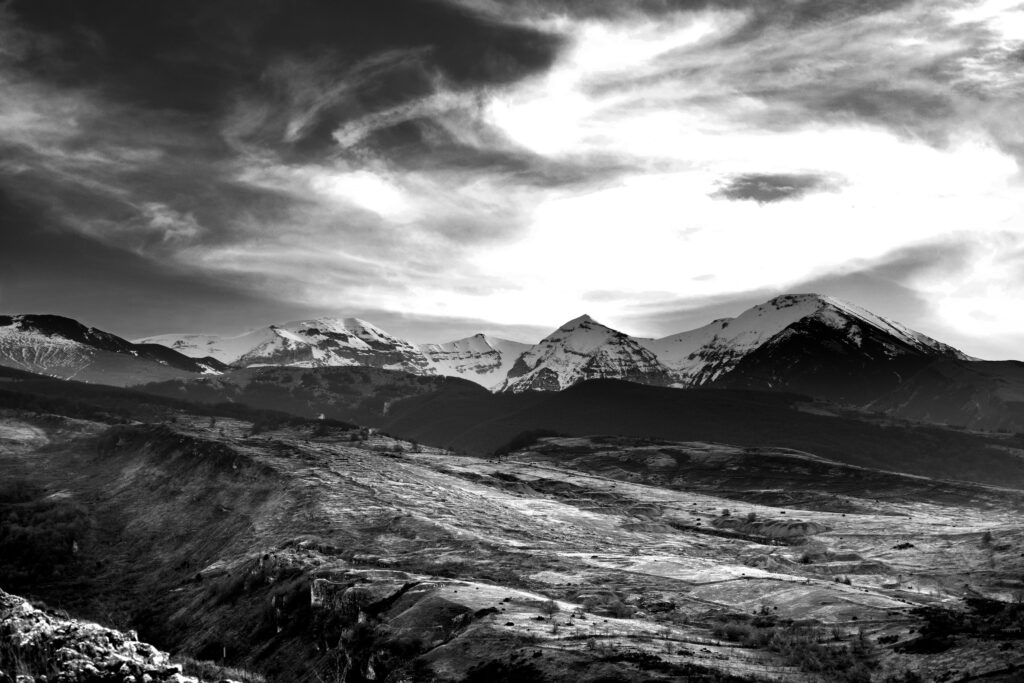
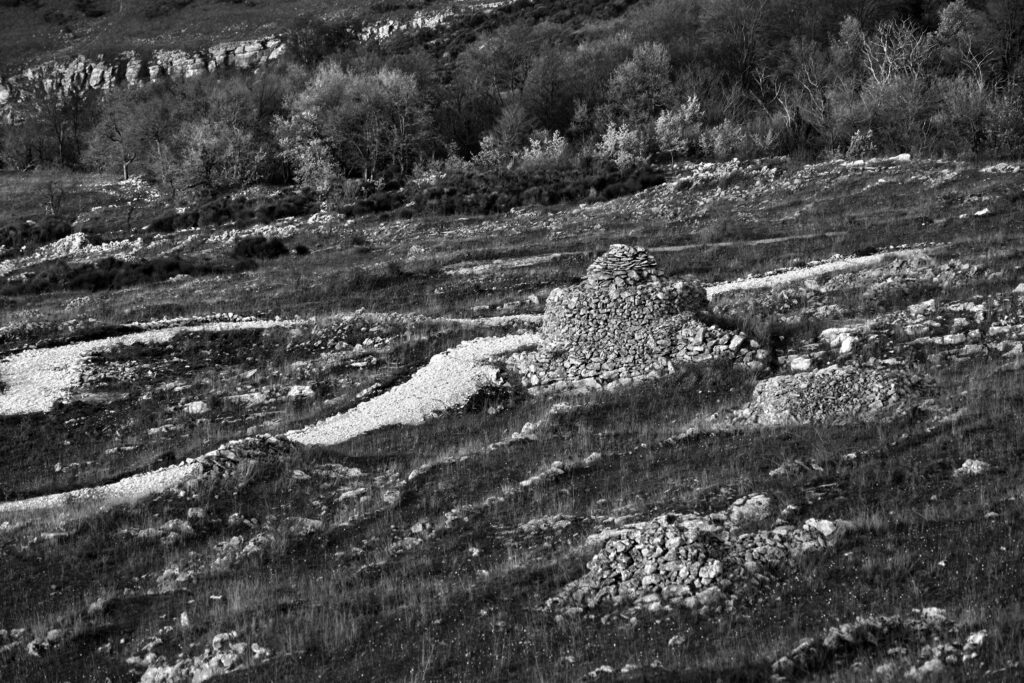
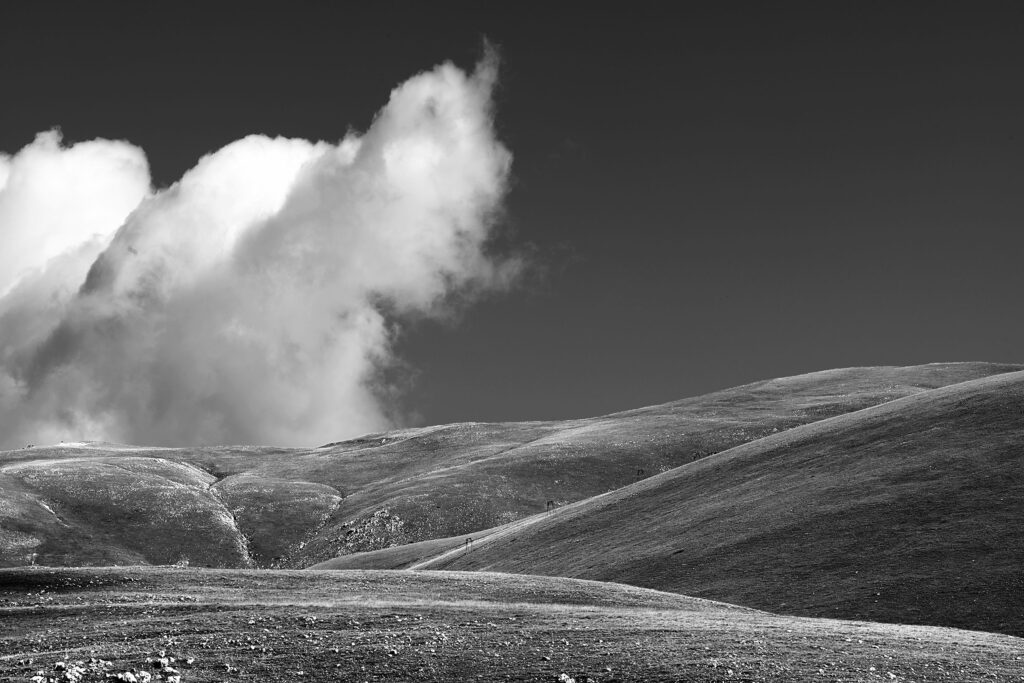
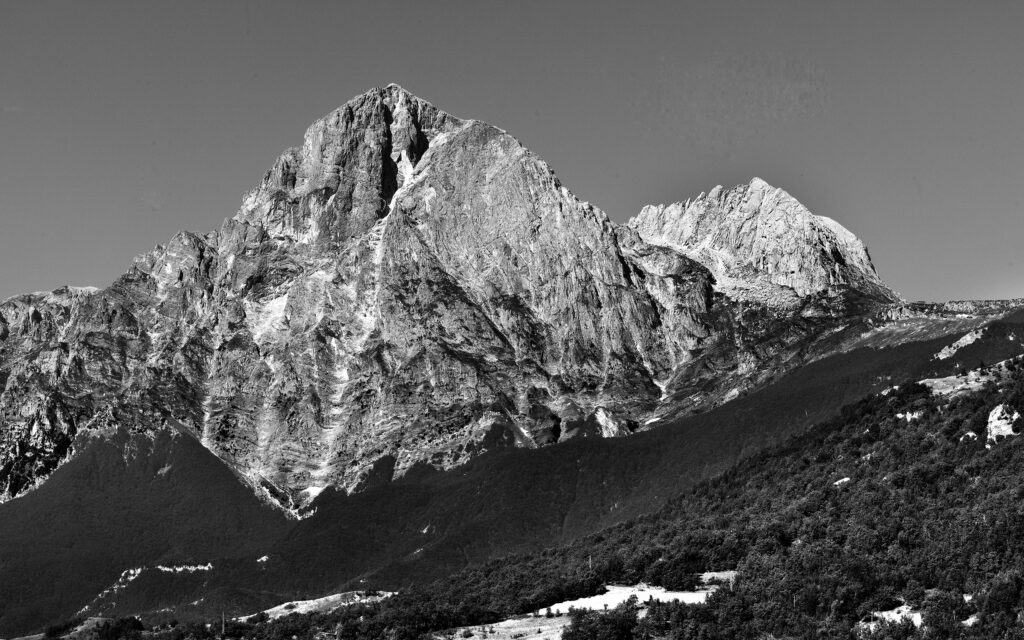
Opening hours
Thursday to Saturday 5 p.m. – 9 p.m. Sunday 11 a.m. – 2 p.m
(please check by mail or whatsapp if the opening hours have been rescheduled)
Entry
Free
Contact details
tel. +39 085 960555 / 333 1049439
info@museolaboratorio.org
Exhibition press office
Sara Zolla | +39 346 8457982 | press@sarazolla.com
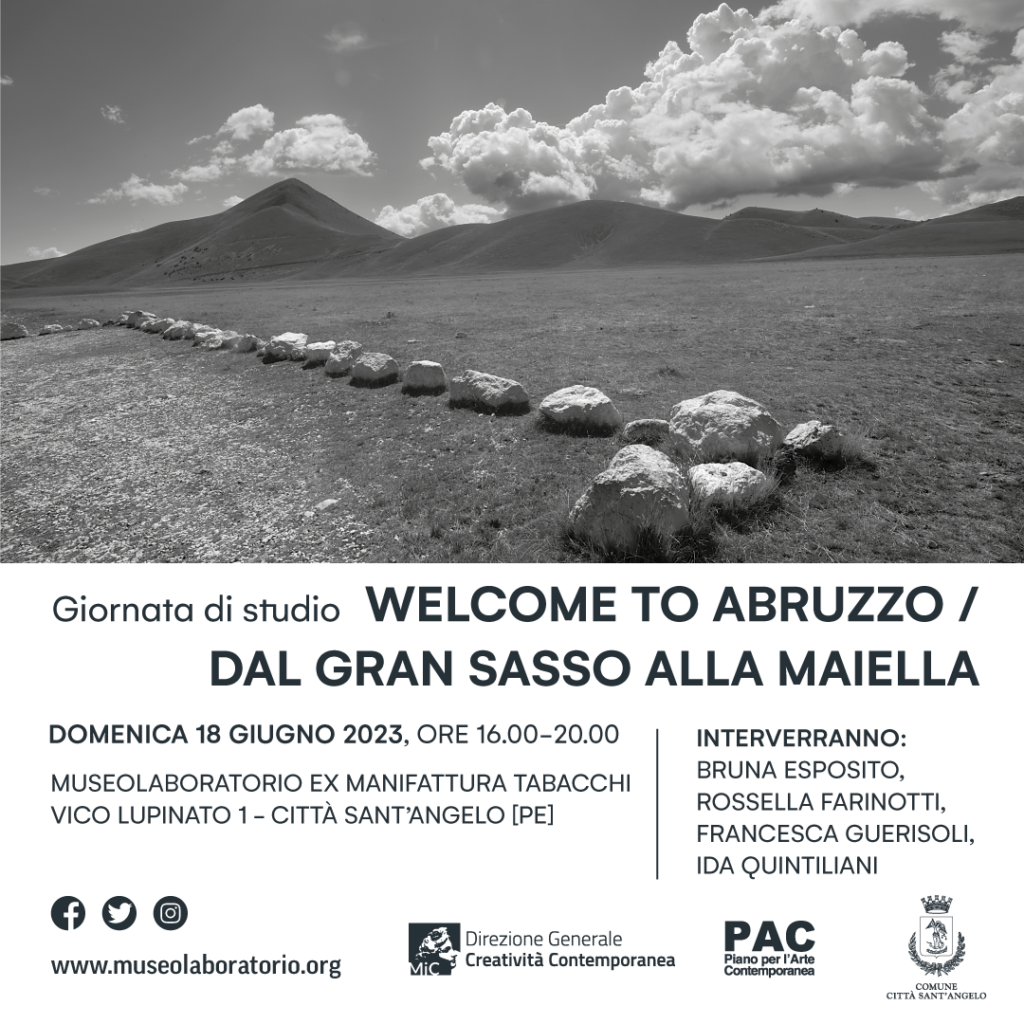
Events developed as part of the winning project of “PAC2021 – Piano per l’Arte Contemporanea” promoted by the Ministry of Culture’s Office for Contemporary Creativity


